Although most of the Kakadu National Park is nominally floodplain, for eight months of the year it consists of dry mud and burning bush. The area has only two seasons, the Dry and the Wet. We had arrived just at the end of the Dry, when the rivers were beginning to fill and the plants were starting to appear lush and green, growing frantically prior to the complete inundation of the Wet.
Kakadu National Park
Our driver, Andy, had driven us in a bus from Darwin. He led us as we climbed to the top of a red mesa-like outcrop that gave stunning views of the flood-lands below.
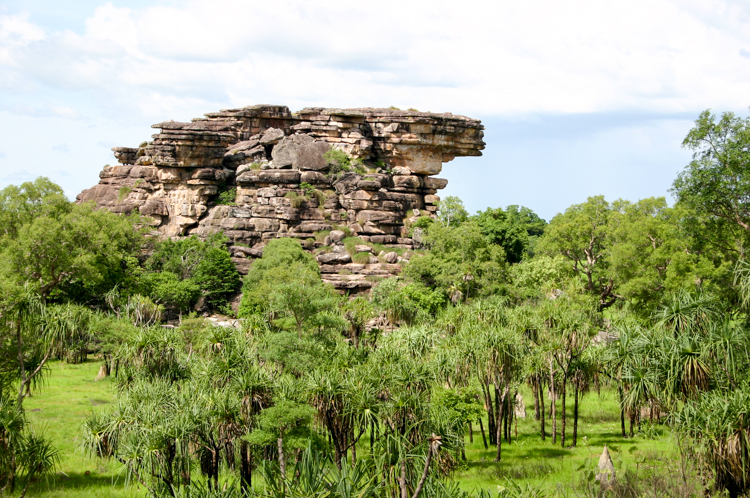
Red rock sticking out of the floodplain 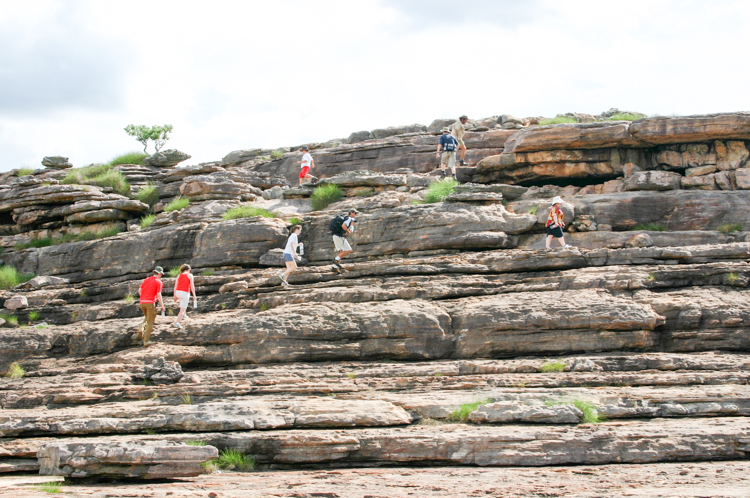
It was a hard climb, with the rock radiating like a pizza oven
Until relatively recently, these plains were home to herds of water buffalo descended from draught animals freed after Darwin was built. Extensive culling has now reduced them to somewhat less than their plague proportions, and now the environment has recovered, although the lush green grass is, inevitably, another introduced species planted by early cattle-ranchers.
Nevertheless, it is an extraordinarily impressive sight, the vivid green contrasting with the bright red rock, all under the merciless glare of the Northern Territories sun.
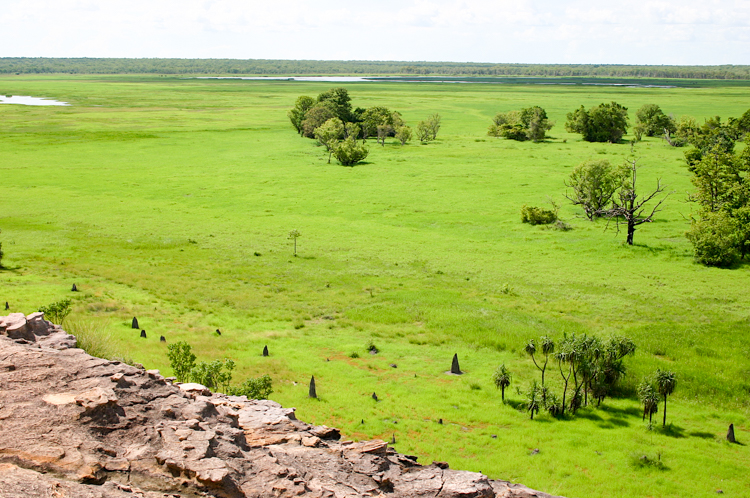
One day soon, all this will be under water
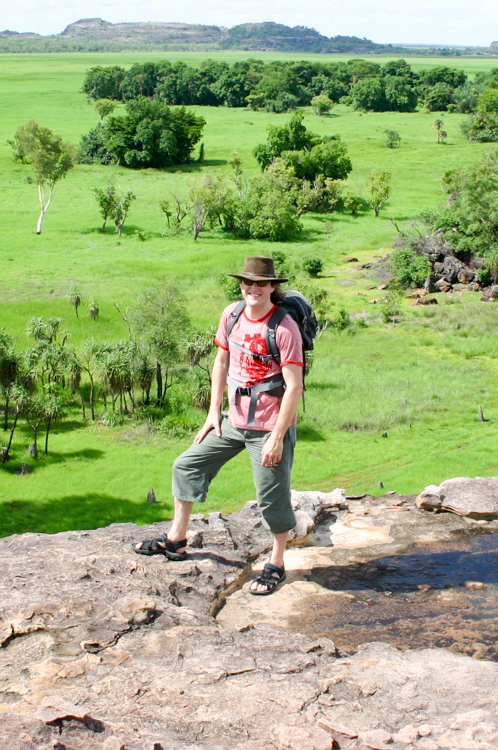
Impressive, huh? 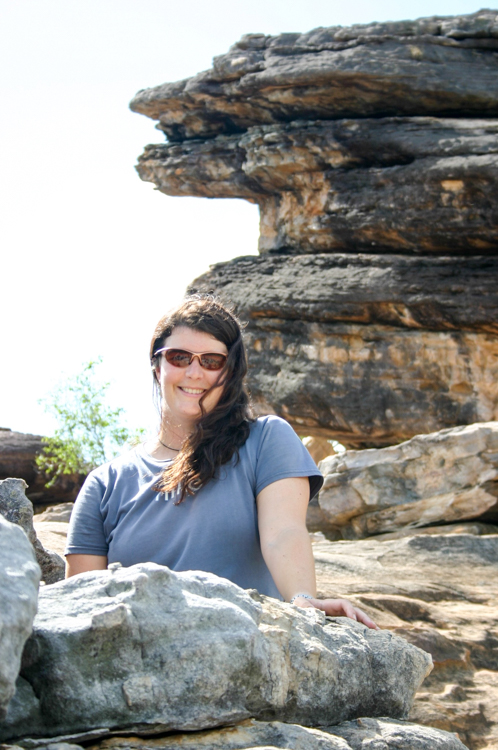
Lovely
Aboriginal Rock Paintings
The Park is managed by a committee of ten aboriginal elders and four local rangers, and much of it is off-limits to tourists because it is used for traditional living. The information provided in various centres scattered around the Park give an interesting mix of aboriginal and European facts, stories, and artefacts, and in fact this rock on which we were climbing is one of the areas aboriginal rock painting sites.
I’d never understood rock painting before, but our driver, Andy, managed to bring the paintings and the culture to life for us. Aboriginal culture is multi-layered, such that as you get older you are taught deeper insights into the topics that you already know, until you are an elder and know all the layers; however, you will still only know the layers of the stories in your particular area or clan.
The information that you learn, handed down in stories about spirits, is all to do with survival in the bush and your behaviour in society. The volume of this information is staggering, but as Andy said, they have 50,000 years of culture to draw upon.
In Kakadu, each picture represents an event or happening, typically a particularly large prey animal. Stories are linked to the painting, which is often laid over older paintings. In this area, animals in particular are pictured transparent in order to display the best way to cut them, and to emphasise those parts which make good eating.
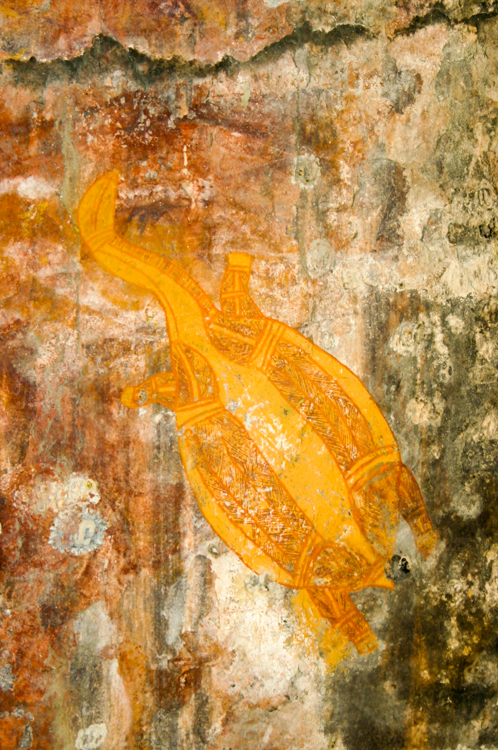
Turtle Soup 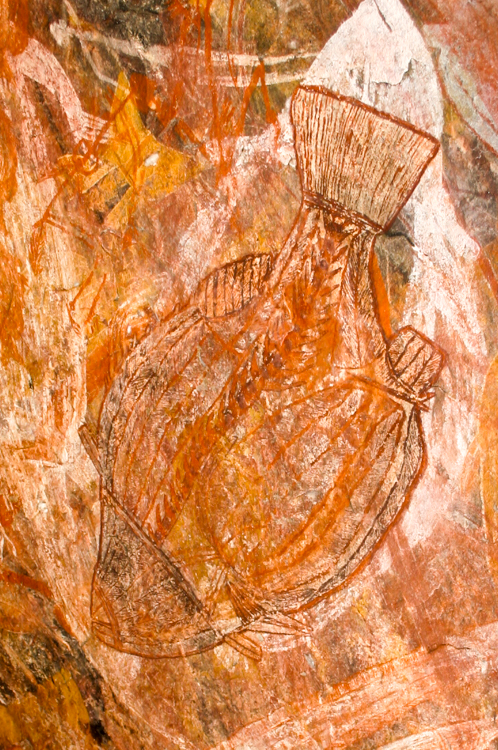
Fish Fillet
Deluge
As the day wore on, clouds began to gather on the horizon. Andy started to look worried, and began collecting us from the far corners of the mesa and shepherding us down to ground level.
What was wrong? It was only a rain cloud.
What we hadn’t taken into account was the sheer volume of precipitation that can fall in these parts. We had heard stories of people being cut off by the start of the Wet, but it didn’t seem real up here on this enormous rock in the sunshine.
Andy had told us about one particular guy who had been camping down in the woods one year, and when the rain started to fall he had been flooded out of his tent so he carried his stuff up to the nearby toilet block. After a while, the building flooded, so he climbed onto the roof. The water continued to rise until it reached him there, too, so he started to climb up the corrugated iron water tower on the roof. When the rescue helicopter finally winched him off, he had cut a hole in the water tank and was sitting inside, watching the level come still higher.
Andy wasn’t kidding us around; he was seriously worried that one or more of the rivers that we had forded on the way in might now be too deep for the bus to get out, and he practically force-marched us back to the vehicle and set off at full speed.
The rivers that we had crossed on the way there had just been trickles across the road, but now after just a few hours, and before the rain had really started, we had over a foot of water across the road.
“Are there crocodiles?” asked the little boy who was obsessed with them, as the bus eased slowly across.
“I’m not wading,” said Andy.
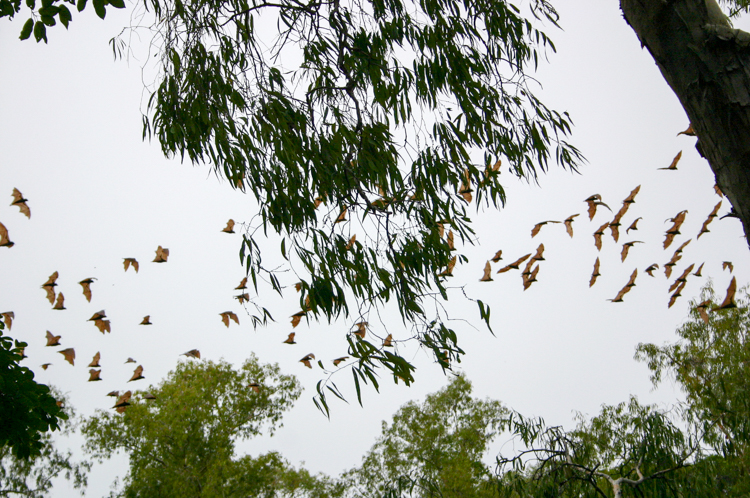
Fruit bats at dusk
Camping Deluxe
We were going to stay overnight at a camp site inside Kakadu National Park. This is a permanent fixture, an attempt to keep everybody in one place and prevent the sort of problems that had befallen the chap in the water tank.
Our large, permanently-pitched tent was certainly a lot more comfortable than our shack in Darwin. It came equipped with camp beds, mosquito netting, a cooking tent, a swimming pool, and a bar, so we weren’t complaining.
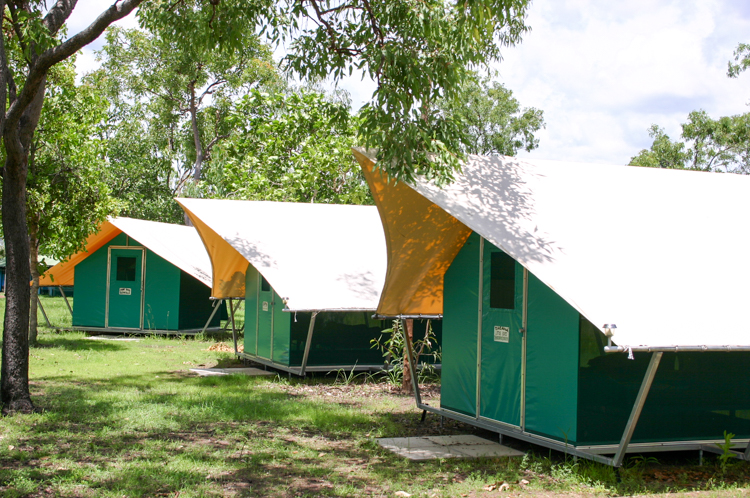
Glamping in Kakadu
We had a very comfortable stay, and the bird noises during the night were wondrous.